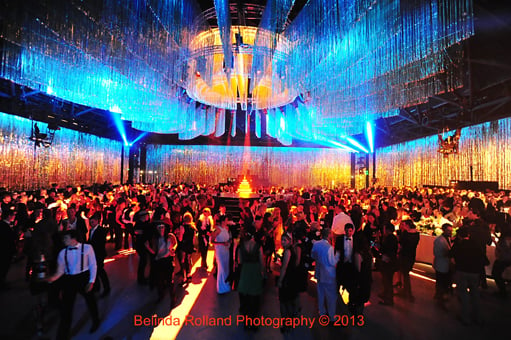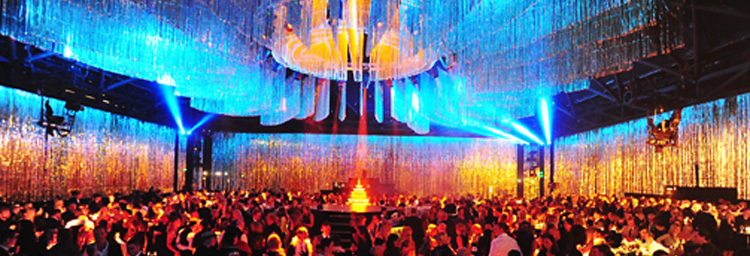There are two parties in Baz Luhrmann’s new film The Great Gatsby and both are pivotal to the narrative of the story. The first party scene is where we meet Gatsby and the second party is where Daisy finally attends a party at the Gatsby mansion, which is the whole reason Gatsby throws his extravagant parties in the first place – to lure Daisy into his world. The parties represent the 1920’s – the boom before the collapse, so the set design of the party scenes had to be packed with elegance, opulence and over-indulgence.
Academy Award ™ winning Production Designer Catherine Martin contracted Tony Assness to be the design consultant for the party scenes in the film. He chose to use Rosco’s Slit Drape as one of the luxurious décor elements to convey that sense of elegance – not only in the second party scene where Jay and Daisy meet, but Tony also used Slit Drape to create a lavish setting for the party held after the Sydney premier.
Is This All From Your Imagination?
The two parties in the movie needed to look different. It had to be obvious they were two different parties and reflect a significant mood change. Visually, the first party is all about floating and buoyancy, while the second is more linear and web like - there is something mournful about the second party. Tony used the sparkling lines of Gold, Diffraction and Iridescent Slit Drape to not only convey the opulence of a Jay Gatsby party, but it also added a sense of falling rain or tears.
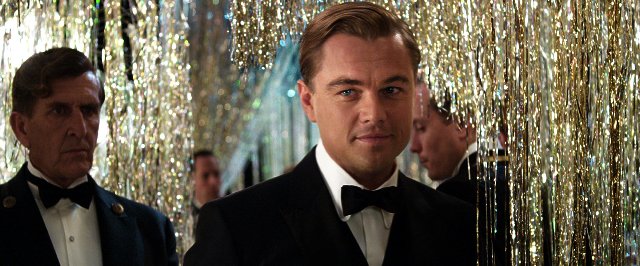 Leonardo DiCaprio in "The Great Gatsby"
Leonardo DiCaprio in "The Great Gatsby"
Tony was called upon to design another party – the after-party for the cast and crew after the Sydney premier of the movie. The party, obviously, had to have the elegance of any other Jay Gatsby party – so Tony again chose Slit Drape to bring the people who worked on the movie into the world of ‘Gatsby.’ When asked how he came up with the design concept for the party, Tony responded “There are a lot of art deco elements in the poster art for the movie. These devices are seen as well at the very end of the movie, as the whole action reduces to this single gold and black JG monogram that is like a gold daisy, which then becomes a bunch of gold frames and then the credits roll. It is a strong visual device that is associated with the look and feel of the film. It was this element that I used to springboard into what we ended up doing for the premier event."
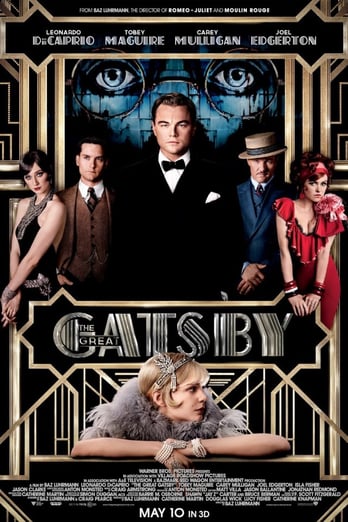 Movie Poster for Baz Luhrmann's "The Great Gatsby"
Movie Poster for Baz Luhrmann's "The Great Gatsby"
The event was appropriately held in The Hordern Pavilion, a venue constructed in 1924 that contains a large, domed, black space that's held up by four 6m high columns. Tony used the black of the space to his advantage and created a gold box to “frame the party” using 16ft Gold Slit Drape between the columns.
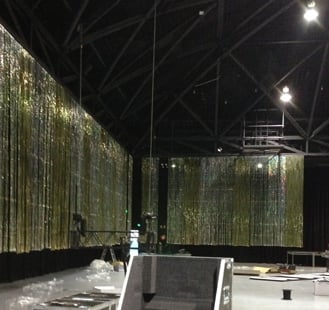
Tony also created a massive representation of the JG monogram as a ceiling effect using 8ft Gold Slit drape.
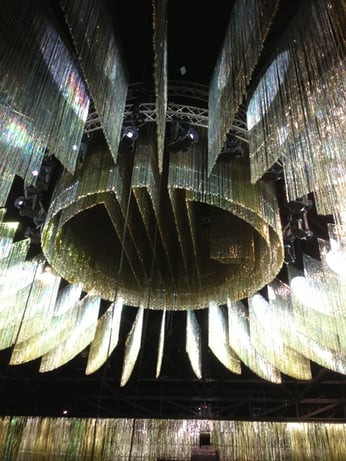
He installed moving lights between the ‘blades’ of the monogram that not only illuminated the Slit Drape with color and showcased its sparkle, but it also blasted through the Slit Drape down over the party’s performers and its guests.
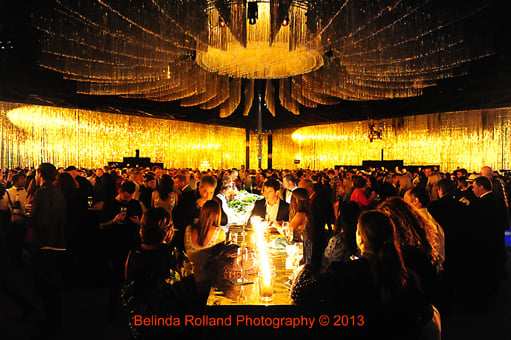 It’s difficult to grasp how dramatic Slit Drape can be until you light it. Tony admits that initially he remembers thinking "how could anyone use something so tacky?” When the product is on a shelf, folded in its plastic bag, you don’t understand what it is – but once you’ve used it and have seen the result of Slit Drape bathed in theatrical lighting – you’ll find you’re calling out for it in jobs you’ve never dreamed of.
It’s difficult to grasp how dramatic Slit Drape can be until you light it. Tony admits that initially he remembers thinking "how could anyone use something so tacky?” When the product is on a shelf, folded in its plastic bag, you don’t understand what it is – but once you’ve used it and have seen the result of Slit Drape bathed in theatrical lighting – you’ll find you’re calling out for it in jobs you’ve never dreamed of.
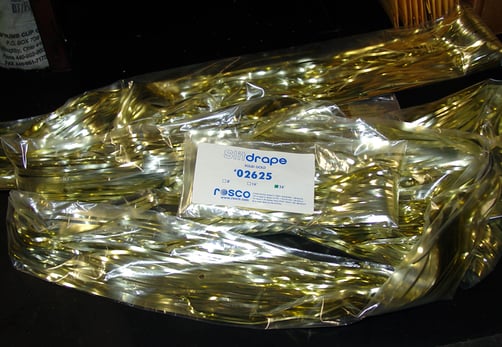 Slit Drape in a Bag
Slit Drape in a Bag
Tony has used Slit Drape in very diverse ways throughout his career, from décor at the opening of an ABBA exhibition to set decoration for a gala concert in the concert hall of the Sydney Opera House. He chooses Slit Drape for a number of reasons – it’s affordable, it’s inherently flame retardant and the number one reason Tony chooses Slit Drape... the stunning effect this simple solution creates once it’s lit.
